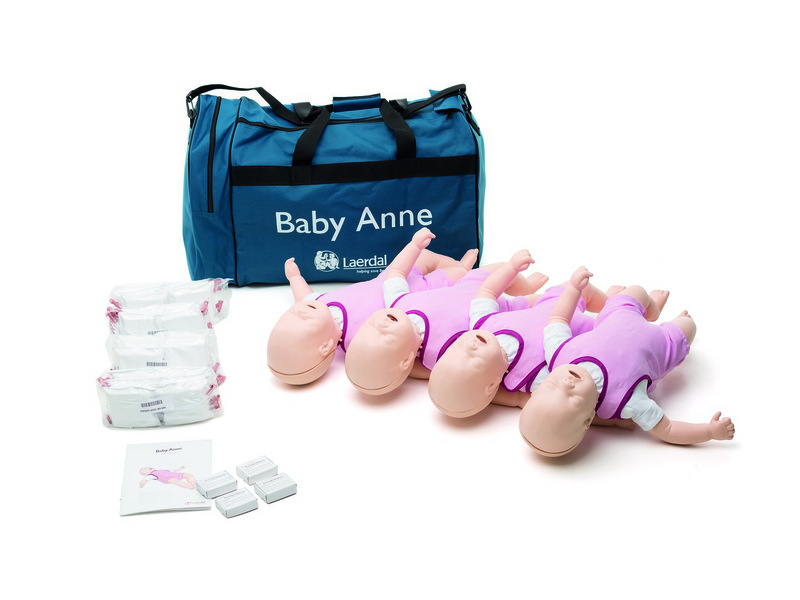
How to perform CPR: Guidelines, procedure, and ratio - Cpr Manikins
Performing CPR (cardiopulmonary resuscitation) is a crucial skill that can help save a person's life in emergency situations. Here are some guidelines, procedures, and ratios for performing CPR using CPR manikins:
Check for responsiveness: First, check if the person is responsive by tapping or shaking their shoulders and asking loudly, "Are you okay?" If there is no response, immediately call for emergency medical services.
Position the person: Position the person on their back on a firm surface. Tilt their head back slightly and lift their chin to open their airway.
Check for breathing: Check for normal breathing by looking for chest rise and listening for breath sounds. If the person is not breathing normally, start chest compressions.
Start chest compressions: Place the heel of one hand on the center of the person's chest (between the nipples) and place the other hand on top of the first. Interlock your fingers and keep your arms straight. Press down hard and fast, allowing the chest to recoil fully between compressions. Aim for a rate of 100-120 compressions per minute.
Give rescue breaths: After 30 compressions, open the person's airway again and give two rescue breaths. Pinch the person's nose closed, tilt their head back, and give two full breaths into their mouth, watching for chest rise.
Continue CPR: Continue with cycles of 30 compressions and 2 breaths until help arrives or the person shows signs of responsiveness.
The ratio of compressions to breaths in medical simulation supplies in canada After every 30 compressions, give two breaths. This ratio is the same for all age groups, including infants, children, and adults.
When using a CPR manikin for practice, it is important to follow the same procedure and ratio as when performing CPR on a person. Make sure to position the manikin correctly, use proper hand placement and pressure, and time your compressions and breaths according to the 30:2 ratio.
Remember, performing CPR can be a stressful and intense experience, but it is a crucial skill that can help save lives. By regularly practicing with a CPR manikin, you can gain confidence and proficiency in performing effective CPR, potentially making a life-saving difference in an emergency situation.
Do you know CPR? Experts explain the importance and how to - Cpr Training Manikins
As an AI language model, I am not capable of performing physical actions, including CPR. However, I can explain the importance of CPR and how to perform it using CPR training manikins.
CPR (cardiopulmonary resuscitation) is a life-saving technique that can help revive a person whose heart has stopped beating. CPR involves chest compressions and rescue breaths, which help to circulate oxygenated blood to the vital organs until emergency medical services arrive.
It is important for as many people as possible to learn CPR, as it can significantly increase a person's chance of survival in an emergency situation. According to the American Heart Association, bystander CPR can double or even triple a person's chance of survival.
CPR training manikins are used to simulate the experience of performing CPR on a real person. They are designed to mimic the weight, shape, and resistance of a human body, allowing learners to practice proper hand placement and pressure during chest compressions.
To perform CPR using a training manikin, follow these steps:
Place the manikin on a firm surface and position yourself at the person's side.
Tilt the person's head back and lift their chin to open their airway.
Place the heel of one hand on the center of the manikin's chest (between the nipples) and place the other hand on top of the first. Interlock your fingers and keep your arms straight.
Press down hard and fast, allowing the chest to recoil fully between compressions. Aim for a rate of 100-120 compressions per minute.
After 30 compressions, open the airway again and give two rescue breaths. Pinch the person's nose closed, tilt their head back, and give two full breaths into their mouth, watching for chest rise.
Continue with cycles of 30 compressions and 2 breaths until help arrives or the person shows signs of responsiveness.
By practicing with a CPR training manikin, you can gain confidence and proficiency in performing effective CPR, potentially making a life-saving difference in an emergency situation.
CPR Depot
340 Croft Dr, Tecumseh, ON N8N 2L9, Canada
14555 Jib St, Plymouth, MI 48170, United States
15199462222

